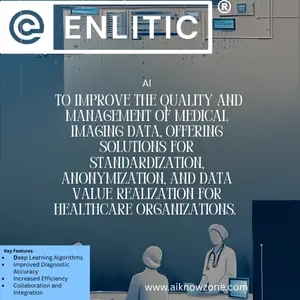
Scientific Writing with Latex
Discover how Scientific Writing with Latex uses AI to streamline academic writing, enhance LaTeX formatting, and boost research productivity.
Description
Scientific Writing with Latex: A Game-Changer for Researchers? 🤔
Struggling with complex LaTeX formatting and the demands of academic writing? Enter Scientific Writing with Latex, an AI-powered tool designed to simplify your manuscript creation process and boost your productivity. It’s like having a tireless research assistant dedicated to perfecting your documents, from equations to citations. But does it live up to the hype? Let’s dive in and explore what makes Scientific Writing with Latex a potential game-changer for researchers, students, and professionals alike. Scientific Writing with Latex aims to enhance your scientific writing by leveraging AI to handle the more tedious and technically demanding aspects of LaTeX. Imagine effortlessly generating complex equations, managing references with ease, and ensuring consistent formatting throughout your document. That’s the promise, and we’re here to see if it delivers. It’s all about making your research shine without getting bogged down in the technical details.
The integration of AI into scientific writing platforms like Scientific Writing with Latex represents a significant leap forward, promising increased accuracy and efficiency. By automating error detection and correction within LaTeX code, these tools can drastically reduce the time spent troubleshooting and refining documents. Furthermore, the ability to train AI models on extensive datasets of scientific literature opens up possibilities for intelligent assistance in various aspects of writing, such as suggesting relevant citations, improving sentence structure, and even generating entire sections of text. This synergy between AI and LaTeX empowers researchers to focus on the core content of their work, fostering innovation and accelerating the dissemination of knowledge. The continuous development of these tools, coupled with ongoing advancements in AI technology, suggests a future where scientific writing becomes more intuitive, collaborative, and accessible to a broader range of researchers.
Key Features and Benefits of Scientific Writing with Latex 🚀
- AI-Powered LaTeX Assistance: Simplifies complex formatting, equation generation, and reference management. No more wrestling with intricate LaTeX code!
- Error Detection and Correction: Identifies and corrects errors in your LaTeX code, ensuring accurate typesetting and formatting. Say goodbye to frustrating syntax errors.
- Citation Management: Streamlines the citation process, making it easier to manage and insert citations in the correct format. Keeping your references organized has never been easier.
- Real-Time Collaboration: Some tools offer collaborative features, allowing multiple users to work on the same document simultaneously. Collaborate with your colleagues seamlessly.
- AI-Driven Content Generation: Certain platforms can even assist with drafting and generating content, helping you overcome writer’s block. Get a head start on your writing.
How It Works (Simplified) 🛠️
Using Scientific Writing with Latex is generally straightforward. Usually, it involves integrating the AI tool with your LaTeX editor (like Overleaf). Many tools are available as browser extensions that seamlessly integrate with existing platforms. Once installed, the AI assistant will be active, offering suggestions and automated formatting as you type. Simply highlight text, and an icon will appear, allowing you to edit or format with AI. Some platforms, like ThesisAI, even allow you to generate entire documents from a single prompt! The AI analyzes your text and provides suggestions for improvement, corrects errors, and automates repetitive tasks. This integration makes the writing process more efficient, allowing you to focus on the content rather than the technical details.
The magic behind Scientific Writing with Latex lies in the AI models that power these tools. These models are trained on vast datasets of scientific literature and LaTeX code, enabling them to understand the nuances of academic writing and the intricacies of LaTeX syntax. When you use these tools, the AI analyzes your input in real-time, comparing it to its training data and identifying potential errors or areas for improvement. This analysis can range from simple grammar and spelling checks to more advanced tasks like suggesting alternative phrasing, identifying inconsistencies in citation formats, and even generating entire sections of text based on your prompts. The AI adapts to your writing style and preferences over time, continuously learning from your feedback and becoming more accurate and helpful. This iterative process ensures that the tool remains relevant and effective, providing you with the most up-to-date assistance possible.
Real-World Use Cases for Scientific Writing with Latex 💡
- Writing a Research Paper: I used it to format complex equations and manage citations in my research paper, saving me hours of tedious work. The AI-powered assistance ensured that my formatting was consistent and error-free, allowing me to focus on the content of my paper.
- Creating a Thesis: It helped me generate a 50-page thesis with inline citations and proper LaTeX formatting, all from a single prompt. The native LaTeX integration was a lifesaver, ensuring that my document was perfectly formatted and ready for submission.
- Collaborating on a Scientific Article: My team used the real-time collaboration feature to work on a scientific article together, streamlining the writing and editing process. The ability to see each other’s changes in real-time and to easily manage citations made the collaboration much more efficient.
- Preparing a Conference Presentation: I leveraged AI to generate visually appealing slides with correctly formatted equations, making my presentation more engaging and informative. The AI’s ability to handle complex formatting ensured that my slides were professional and easy to understand.
Pros of Scientific Writing with Latex 👍
- Significantly reduces the time spent on formatting and technical aspects of LaTeX.
- Improves accuracy and consistency in scientific writing.
- Streamlines the citation management process.
- Offers real-time collaboration features for team projects.
- Helps overcome writer’s block with AI-driven content generation.
Cons of using Scientific Writing with Latex 👎
- May require a learning curve to fully utilize all features.
- The quality of AI-generated content may vary depending on the platform and the prompt.
- Reliance on AI could potentially hinder the development of independent LaTeX skills.
- Some tools may have limitations in handling highly specialized or niche scientific fields.
Scientific Writing with Latex Pricing 💰
Pricing varies depending on the specific tool. Some offer free tiers with limited features, while others operate on a subscription basis with different pricing plans based on usage and features. Overleaf, for example, has a free version and paid subscriptions. ThesisAI operates on a credit-based system. Be sure to check the pricing details of each tool to find the one that best fits your budget and needs.
Conclusion 🎯
Scientific Writing with Latex tools offer a powerful way to streamline academic writing and enhance LaTeX formatting. If you’re a researcher, student, or professional who frequently works with LaTeX and wants to boost your productivity, these tools are definitely worth exploring. However, it’s important to be aware of the potential limitations and to use these tools as a complement to, rather than a replacement for, your own LaTeX skills. Overall, the integration of AI into scientific writing has the potential to revolutionize the way we create and share knowledge. So, go ahead and give Scientific Writing with Latex a try – it might just be the secret weapon you need to conquer your next scientific manuscript! 🚀





Reviews
There are no reviews yet.